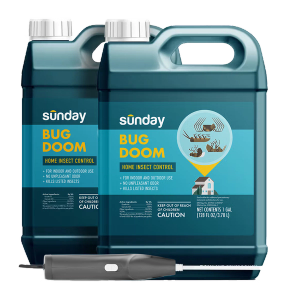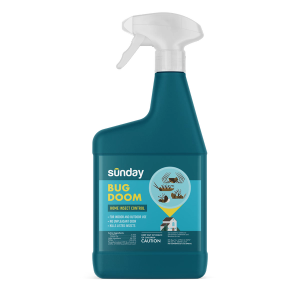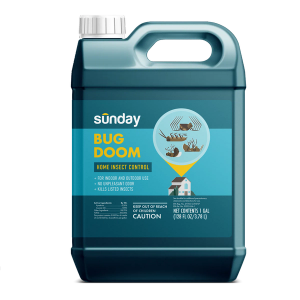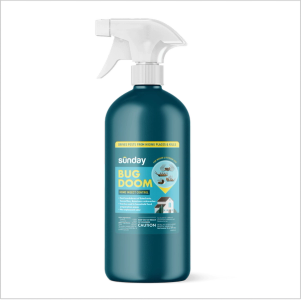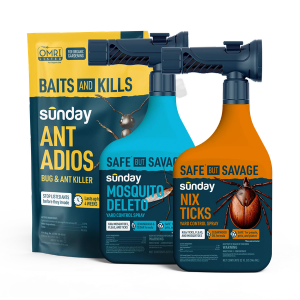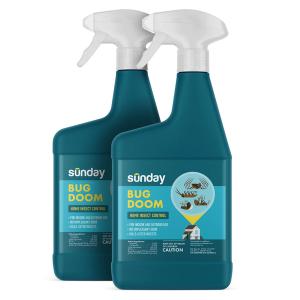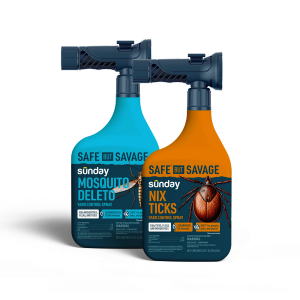Ticks: Why they're a big deal
Ticks aren't just another annoying pest—they can pose serious health risks to humans and pets. If you live near woodlands or tall grasses, spend a lot of time outdoors, or have pets that do, you might be at higher risk for tick encounters.
Protecting yourself without harsh chemicals
If this sounds like you, there's good news: you can keep ticks at bay without hiring a professional service or using harsh chemicals. With Sunday's Nix Ticks and a few natural prevention steps, you can effectively reduce tick presence while being kind to the environment and your wallet.
Repel and control ticks with Sunday's Nix Ticks
Sunday's Nix Ticks is a cedarwood oil yard-control spray that kills and repels ticks (and other pests) on contact and offers sustained protection.
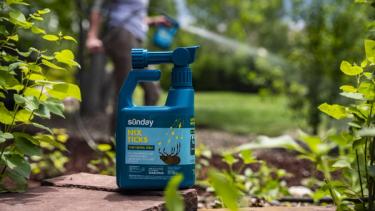
How to apply Nix Ticks
- Read the label: As with all pesticides, always read the label first. Wear eye protection and full-length clothing when applying.
- Identify your protected zone: Decide where you spend the most time in your yard. This will be your "protected zone" where you'll spray Nix Ticks.
- Target shady areas: Ticks love shade, so spray areas where they can hide from direct sunlight, such as woods, trees, and bushes.
- Create a barrier: Spray a 12-foot-wide strip along the lawn where it meets shaded areas to create a protective barrier.
- Reapply: After 7 days, reapply to reinforce your barrier.
- Regular maintenance: Apply Nix Ticks every 2-4 weeks to maintain effectiveness.
Sunday Tip:
Avoid spraying vegetables, flowers, succulents, or any flowering plants. This helps keep pollinators and other insects safe and provide important benefits to your yard.
When to apply Nix Ticks
- Active Periods: Ticks are most active from spring to early summer and in the fall when temperatures are above 40–45 degrees Fahrenheit.
- Less Active: They are less active during the peak heat of the summer months.
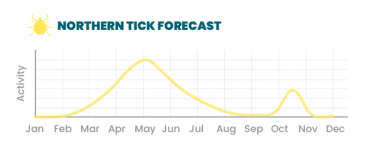
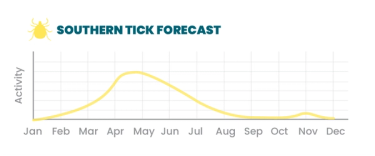
Prevention Tips
Prevention is key whether you're unfazed by ticks or constantly on alert. Here are pest expert tips to keep ticks at bay.
Know your local ticks: Use the CDC 'Where Ticks Live' map to learn which ticks are common in your area.
Inspect after outdoor activities: If your yard borders a wooded area, tick-check yourself, your family, and your pets after spending time outside.
Wear tick-repellent clothing: Treat your clothing and gear with permethrin before spending time in tick-prone areas.
Maintain pet areas: To kill eggs, use pet-safe tick repellents on your pet's bedding and clean sleeping areas.
Limit tick habitat: This is key to reducing breeding and hide-out habitat for ticks to find refuge in your yard. Here's how: Cut back shrubs and wooded edges near areas your family and pets frequent.
Need more help?
If you have a larger tick problem, consider a multipack of Nix Ticks or our tick pest plan for additional support, applications, and cost savings to keep your backyard tick-free.
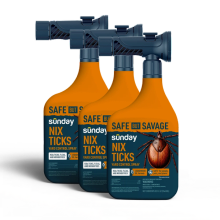
Tick Protection Plan (Medium)
- Nix Ticks is plant-based and kills ticks on contact
- Plus, it prevents them for up to four weeks!
- Provides between 4-6 months of protection
- Save 19% when you purchase a plan
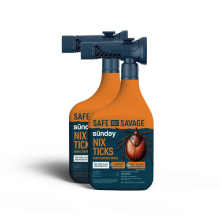
Nix Ticks Bug Control Sprays (2-pack)
- Powered by cedarwood oil
- Safe when used as directed
- Kills on contact
- Effective for up to 4 weeks
- Covers 5,000 sq. ft.
Cited sources
Tick Checks. Rutgers University.
Ticks. NYS Integrated Pest Management, Cornell University.
Where Ticks Live. CDC.



